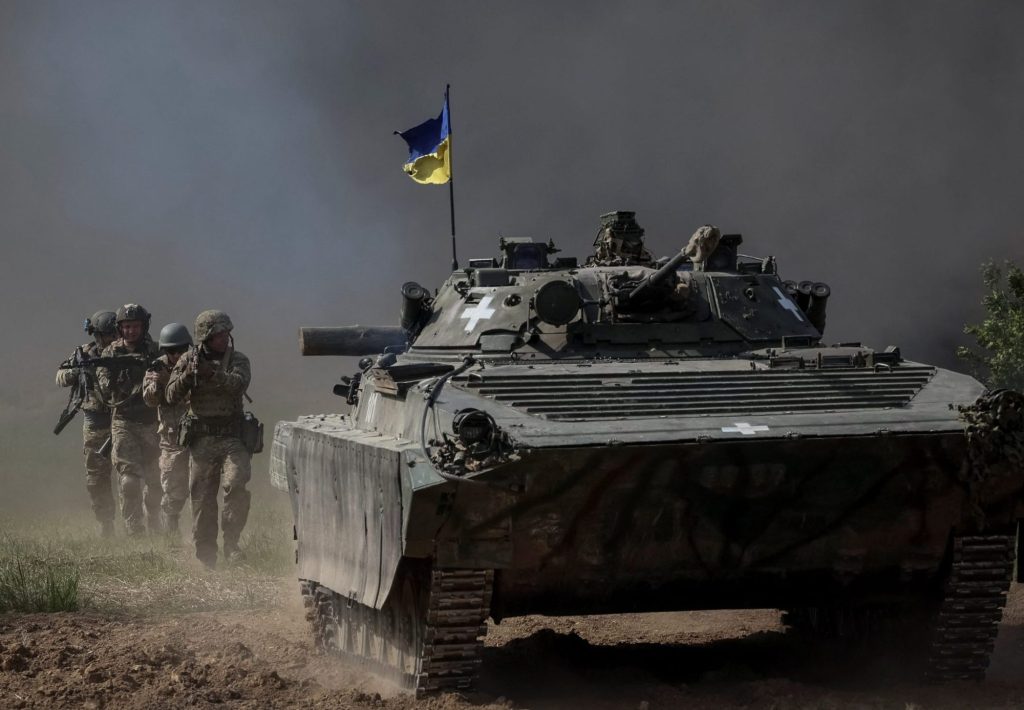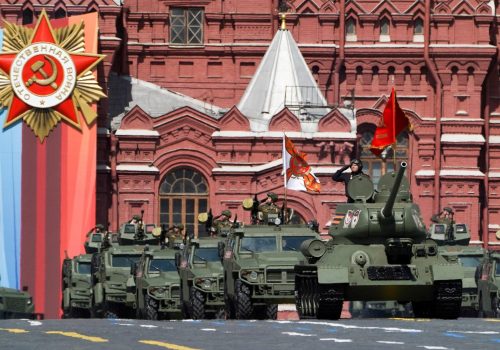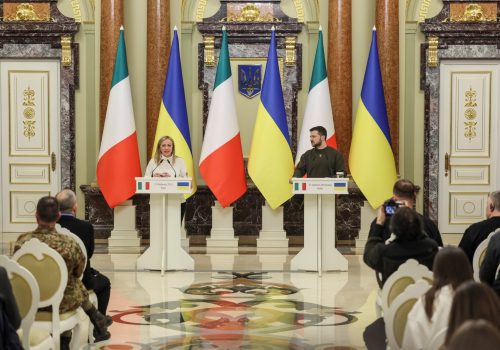As the Ukrainian General Staff prepares for its much-heralded counteroffensive, retaking Crimea is at the top of the operational wish list. Some experts, including senior US officials, consider this an unrealistic aim. To be sure, there are many challenges. Attacking Crimea from the Kherson region would likely involve an opposed crossing of the Dnipro river, intense fighting to reach the narrow Perekop isthmus, and then essentially frontal attacks against heavily mined barriers to breach successive lines of Russian defenses, all in the face of strong Russian artillery. Ukraine will be hindered by its lack of air power and long-range fires, as well as an absence of amphibious or airborne platforms, making a frontal assault almost the only option.
Nevertheless, while daunting, the task is far from impossible. From the Huns and the Mongols to the British, the Bolsheviks, and the Germans, many invading armies have managed to conquer Crimea. Furthermore, Ukrainian morale, generalship, and combined arms capabilities all exceed Russia’s, while the fielding of up to eleven fresh brigades with excellent Western equipment has greatly strengthened Ukraine’s ground forces.
Stay updated
As the world watches the Russian invasion of Ukraine unfold, UkraineAlert delivers the best Atlantic Council expert insight and analysis on Ukraine twice a week directly to your inbox.
What might a Crimean offensive look like? The Ukrainian military may well conduct sophisticated shaping operations using drones, artillery strikes, and special operations forces. A successful crossing of the Dnipro and advance to the isthmus would also shake the resolve and fighting spirit of Russian defenders.
There may, however, be a better way. Past invasions, while successful, often proved extremely costly. The British and French lost 165,000 men during the mid-nineteenth century Crimean War, for example. Given its high losses to date, Ukraine will seek to achieve its strategic objectives while preserving as much of its armed strength and physical infrastructure as possible. Bitter fighting on the Crimean peninsula would also take a heavy toll on civilians. Accordingly, cutting Crimea off from Russia and starving it of military support could achieve Ukrainian war aims at much lower cost.
This approach would see the bulk of Ukraine’s new mobile brigades massing near Dnipro, a major road and rail hub in southeastern Ukraine well outside Russian artillery range, before rupturing the front and driving for Zaporizhzhia. From there, the operational objective would be the capture of Melitopol and the severing of the land bridge from Russia to Crimea.
The open, flat terrain of southern Ukraine and the region’s relatively good road network create favorable conditions for mobile operations and logistical resupply. Supporting efforts would include maintaining pressure on Donetsk and Luhansk in eastern Ukraine to hold Russian forces in place there.
If a thrust to sever Russia’s land bridge proved successful, two options could then be considered. One would be to wheel westward and isolate Russian troops in the Kherson region. Alternatively, Ukrainian forces could turn to the east and attempt to recover Mariupol, which has been occupied by Russia since May 2022.
In either case, seizing Melitopol would cause a crisis among Russian political and military leaders, as Russian forces in the south and east would be cut off from each other, rendering a coherent defense at the operational level impossible. This would dramatically undermine Russian morale and encourage further international support for Ukraine.
If mounted in June, Ukraine’s counteroffensive could potentially be concluded by summer’s end, leaving the Crimean Bridge as the only remaining option for ground resupply of Russian forces in Crimea. Campaign success, however, would bring Ukrainian long-range missiles within range of the bridge, which would also be vulnerable to drone attacks.
Meanwhile, resupply of Russian forces in Crimea by air and sea would become precarious, as ports and airfields would now be vulnerable to drone, missile, and rocket artillery strikes. In short, Crimea would be effectively isolated. Regained Ukrainian control of the North Crimean Canal, Crimea’s principal water supply, would only add to Russia’s logistical woes.
If Ukraine’s counteroffensive makes good progress in the south, the Russian Black Sea Fleet will likely find that it cannot remain in Crimea. With its home port of Sevastopol in range of Ukrainian rocket artillery, the fleet would be forced to withdraw to Novorossiysk on the Russian Black Sea coast, a much poorer anchorage with fewer facilities for naval units.
Putin would probably react to such unprecedented setbacks by reviving threats to respond with nuclear weapons, while simultaneously demanding international intervention in the form of diplomatic pressure on Kyiv for a ceasefire and a negotiated settlement that would leave him in possession of at least some Ukrainian territory. However, Putin’s nuclear saber-rattling has lost much of its impact through overuse, and because China has made it clear that nuclear weapons must be off the table.
As for salvation through diplomacy, major Ukrainian advances on the ground this summer could bring ultimate victory within sight and encourage Ukraine to carry on. If Ukrainian troops are making progress, the country’s leaders will not be in the mood to negotiate and throw away hard-won success at the conference table, however much pressure comes from outside. Allies and partners like the British, the Poles, the Nordics, and the Baltic nations can be counted on to offset other dissenting voices and to reinforce Ukrainian battlefield gains.
Eurasia Center events

Are the Ukrainian armed forces capable of bringing this off? A number of variables will come into play. Adequate quantities of fuel, spare parts, artillery, and air defense munitions along with other classes of supply must be available.
As with the Kharkiv offensive in September 2022, operational security and successful deception operations will be critical. The Ukrainian General Staff must be capable of true operational art. They must be able to sequence combined arms battles and engagements in time and space and across multiple domains to achieve decisive battlefield results. The Russians, too, must cooperate by continuing to demonstrate flawed generalship, low morale, and an inability to synchronize combat power at points of decision.
In war, of course, the future remains uncharted territory. But all signs point to a clear opportunity for the Ukrainian counteroffensive to succeed. In spite of heavy casualties, continuous combat, and an unending rain of missiles on its civilian infrastructure, Ukraine has managed to generate fresh, well-equipped, and well-trained reserves in large numbers. Talented commanders have come to the fore, vetted by years of experience fighting the Russians.
The Ukrainian General Staff is not likely to accept the risks inherent in major operations of this sort without confidence that its logistics are in place and its planning is sound. Furthermore, Ukrainian commanders must be encouraged by what they see across the front lines. Facing them are a shattered Russian army that has taken enormous losses in tanks, troops, and munitions; an ineffective Russian air force; and a Russian Black Sea Fleet that can do little but shelter in its anchorage. No outstanding Russian commanders have emerged from the carnage of the past 15 months. One must assume the Russians are currently waiting for Ukraine’s attack with low confidence and a sense of foreboding.
Subsequent phases of the campaign will seek, through diplomacy, continued sanctions, and military force, to liberate Ukraine entirely. Recent moves, such as the UK’s provision of Storm Shadow cruise missiles and other long-range munitions, are changing the military calculus. So, too, will the long-delayed decision to train Ukrainian pilots on the F-16 fighter jet. Putin is counting on support for Ukraine to degrade as allies and partners tire. In fact, Ukraine grows stronger while Russia increasingly turns to obsolete equipment and ever-more reluctant conscripts.
As we are often told, no plan survives contact with the enemy. There will likely be the occasional tactical miscue or operational hiccup during the coming counteroffensive, but a careful assessment suggests the odds are heavily in favor of Ukraine. More savage fighting lies ahead, but the end of the war may gradually be coming into view, and it looks very promising from Ukraine’s perspective.
Richard D. Hooker Jr. is a nonresident senior fellow with the Atlantic Council. He previously served as Dean of the NATO Defense College and as Special Assistant to the US President and Senior Director for Europe and Russia with the National Security Council.
Further reading
The views expressed in UkraineAlert are solely those of the authors and do not necessarily reflect the views of the Atlantic Council, its staff, or its supporters.

The Eurasia Center’s mission is to enhance transatlantic cooperation in promoting stability, democratic values and prosperity in Eurasia, from Eastern Europe and Turkey in the West to the Caucasus, Russia and Central Asia in the East.
Follow us on social media
and support our work
Image: Ukrainian servicemen prepare for the coming counteroffensive. May 15, 2023. (REUTERS/Gleb Garanich)




